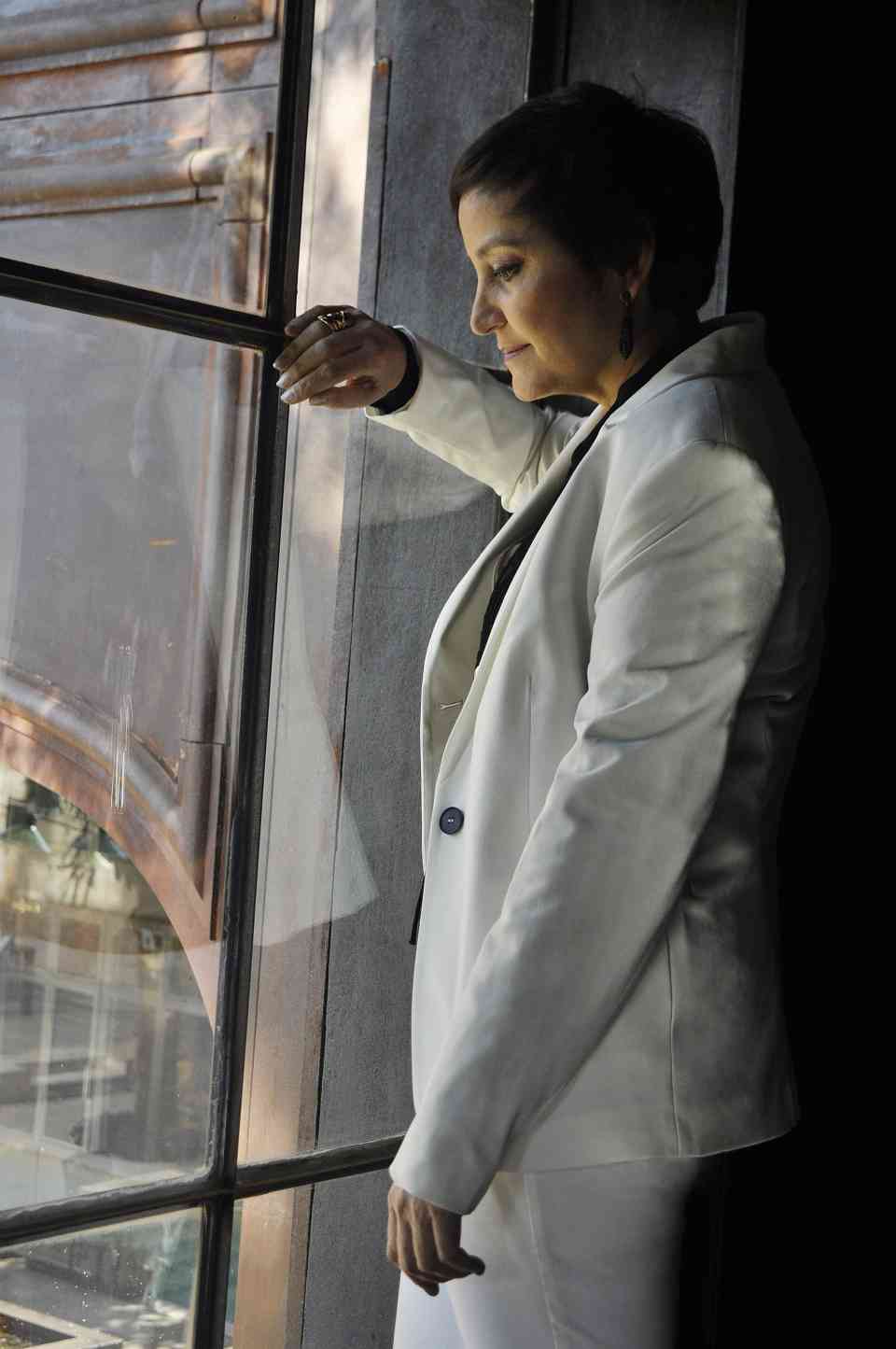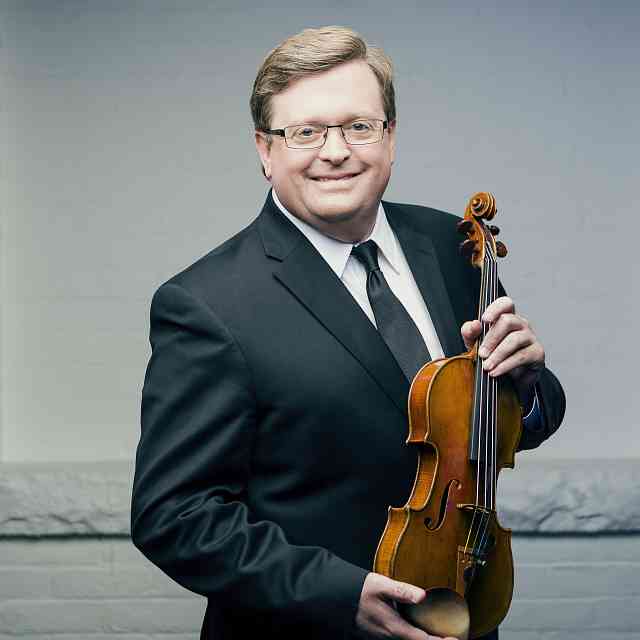
Berta Rojas
Guitarist Berta Rojas, originally from Paraguay, will be our guest clinician at this year’s SAA Conference. We guitarists could not be more excited to visit with Berta and watch her work with our students. This interview offers us a closer look into her background and passion for music.
Renowned for her flawless technique and innate musicality, Berta Rojas ranks among today’s foremost classical guitarists. She has been praised as “guitarist extraordinaire” by the Washington Post and by Classical Guitar Magazine as “Ambassador of the classical guitar.” She has been nominated three times for a Latin Grammy Award.
Berta’s acknowledged warmth and musicality have accorded her a place of preference among audiences that have applauded her at such major stages as the Weill Recital Hall of Carnegie Hall and the Frederick P. Rose Hall of Jazz at Lincoln Center in New York, London’s South Bank Centre, Kennedy Center in Washington, DC, the National Concert Hall in Dublin, as well as the Flagley Studio 4 in Brussels where she performed with the Brussels Philharmonic Orchestra for the Belgian National Television.
In 2011, Berta, along with Paquito D’Rivera as guest star, initiated the four-year tour “In the Footsteps of Mangoré,” which followed the travels of Agustín Barrios, pioneer of the classical guitar in the Americas. The duo performed in 20 Latin American and Caribbean countries, concluding the journey at the national theater of the capital of El Salvador, the final resting place of this celebrated composer.
In addition to continually enriching her own artistic career through frequent international tours giving concerts and masterclasses, Berta Rojas is firmly committed to furthering and disseminating the classical guitar. A particular focus is on promoting the music of her country, Paraguay, as well as Latin American music, and ongoing support for the careers of young, upcoming artists.
Along those lines, she created the first online classical guitar competition, the Barrios World Wide Web Competition, in 2009. With two editions already held, it continues to generate tremendous interest throughout the guitar world. Additionally, Berta was the artistic director of the three editions of the Ibero-American Guitar Festival at the Smithsonian Museum in Washington, DC, and co-founded the Beatty Music Scholarship Competition for Classical Guitar for youth, garnering the winners an opportunity to perform at the John F. Kennedy Center in Washington, DC.
Rojas has been honored as a Fellow of the Americas by the Kennedy Center for the Performing Arts for her artistic excellence. In a 2014 publication, the news agency EFE deemed her one of the most influential women in the Hispanic world.
How did you become interested in the guitar as a young person? Who were the teachers and professional guitarists that inspired you and how did they engage your interest?
From an early age, I had the opportunity to observe my brothers make music and bring it to our home; those moments might have been what heavily influenced my inclination towards music. I subsequently studied both piano and guitar, until the time came when I had to choose between the two instruments. I am profoundly grateful to my first teachers, Felipe Sosa and Violeta de Mestral, and before that, Emiliano Aiub Riveros, because they knew the right way to inculcate love and respect for music. It would have otherwise been very easy to frustrate the restless little girl I was back then. Once I was already immersed in the world of classical guitar, some of my teachers were Eduardo Fernández, Abel Carlevaro, and Manuel Barrueco, whose guidance made it possible for me to grow as a musician and a guitarist, and I’d also like to mention teachers who left an important mark on me, such as Mario Payseé, Julian Gray, Ray Chester.
What were your favorite pieces to play as a young student?
I loved Tarrega’s pieces. “Lágrima” was a big hit! But when I discovered Barrios’ music, it was love at first sight.
When I began visiting Central America as a Suzuki clinician, from my first moments in the airport, the guitar case on my back invited many comments. Everyone asked me if I knew of Mangoré and every guitarist I met told me their teacher was a student of or studied with a student of Mangoré. There is a lot of respect and even, I would say, reverence for him and his legacy.
Did you feel the influence of Agustín Barrios growing up as a guitarist in Paraguay? Do you feel a connection or a responsibility in bringing his legacy in music to the world?
I felt the same sensation when I visited Central America, especially El Salvador. I believe that Barrios arrived there as a mature artist, having traveled so much, a profound inner beauty and amazing music written, that his whole self made a huge impact in the people that had the privilege to know him.
The legacy of Agustín Barrios is one of Paraguay’s greatest cultural treasures; through playing his music I discovered what’s most essential and profound about the land I was born in and about this great homeland we call Latin America. When I acquired that meaningful understanding of the invaluable heritage Mangoré left us, that’s when my mission to share it with the people of my country began, especially with the younger generations so that they, too, may feel connected with his music. We undertook an enormous challenge and decided to carry out a tour titled “Con Berta Rojas hoy toca Mangoré,” a tour that will celebrate its 10th edition in 2018. The tour includes colleges and schools in my country. We have reached almost 50,000 young students, introducing them to Barrio’s music and with it, to the classical guitar, a discipline not very well known in that age group.
We also held two editions of the Barrios Competition, a contest in which our aim was to encourage young talents from around the world to play Barrio’s music; it was a very beautiful experience to see the universality of this great composer’s work.
My latest major project with Barrios’ figure was to tour at least the capital of each Latin American country in which Barrios played throughout his life, with the grand finale at the National Theatre of El Salvador, where Barrios himself performed. I went through this journey with Paquito D’Rivera, who helped us expand our reach beyond the classical guitar world and welcome a wider audience, as I think Barrios would have liked. They were incredible concerts and traveling through Latin America was a spectacular adventure. It made me appreciate even more the unbelievable effort Barrios made in his time, when traveling was not as comfortable as it is today.
Have you met Tony Morris—guitarist, Radio host of “Classical Guitar Alive!” and now filmmaker who lives in Austin? Are you familiar with his research and his subsequent work on the movie “Mangoré?”
I know Tony; he’s a dear friend of mine and he’s written a movie script, the second movie that’s trying to be filmed about Barrios. I wish my dear friend all the success in the world so that his depiction of Barrios, written from the perspective of a guitarist, gets to achieve its cinematographic realization.
You have been a supporter of guitar education through the Beatty Competition and the Barrios World Wide Web Competitions. Can you talk a little about what inspired you to provide these avenues for students and about your interactions with the student competitors and winners?
An instrumentalist’s career demands great dedication, not only because of the long practice hours it requires, but also due to the lack of opportunities to showcase what has been achieved through all that practice. And when an opportunity finally presents itself, there’s an immense pressure that makes it difficult to enjoy the encounter with the audience. As a result, we believe the competitions are an excellent way to find a space for musical growth and also to learn how to channel emotions and gain experience, especially in a setting like the Beatty Competition where each contestant is well cared for. It’s all about creating a very special climate of solidarity and growth, which is vital because the competition is aimed at students of all ages. We wanted to create an experience that would stimulate them to grow, and I think we achieved our goal. Amy Cutts, the director who has already been running 10 editions of this competition, has found great satisfaction in the product of all that effort.
How did you become familiar with Suzuki method, and can you share with us any insights through your experience working with Suzuki students?
I learned the Suzuki method in greater depth through visiting my dear friend Frank Longay’s school, whose marvelous work I had the chance to get to know when he was still alive. This allowed me to delve into the work they do and I believe it has immense virtues, especially in terms of the shared practice that involves the student’s parents, which is one of the greatest strengths of the method and helps notably with the development of musicality. I’m a great admirer of the Suzuki method.
I read that you have recently joined the faculty of Berklee College of Music as the first Latin American Guitar Faculty member. So, first—congratulations! Berklee is my alma mater, so I am very interested in your work there. Can you describe a bit about your role as a Berklee professor and what the vision for the guitar department is in including you?
One of the wonderful things about Berklee is its musical diversity, which undoubtedly makes it a very special place. The college is home for people of different cultures, so it is easy to find different genres, styles, and rhythms. I am delighted with what it means to be part of all this diversity and to be welcomed, both as a woman and as a Latin American, which is not very common since few Latin Americans are part of the teaching staff. More than anything, I hope to contribute to this college and to meet the expectations of a young and immensely talented student body.
Berta, thank you for taking the time to speak with me and do this interview for us! We are all looking forward to your time with us at the conference.
It will be a treat for me to be a part of this event. Thanks so much for contacting me and for writing this article!
Berta included a link for us. Titled “The Making of Felicidade,” this video highlights her latest project. Together with other notable musicians from Latin America as well as the National Symphony Orchestra of Paraguay, “Felicidad” features music with guitar, orchestra and the talents of musicians with a varied and multi-cultural palette. https://youtu.be/HjGbsG00VY4







